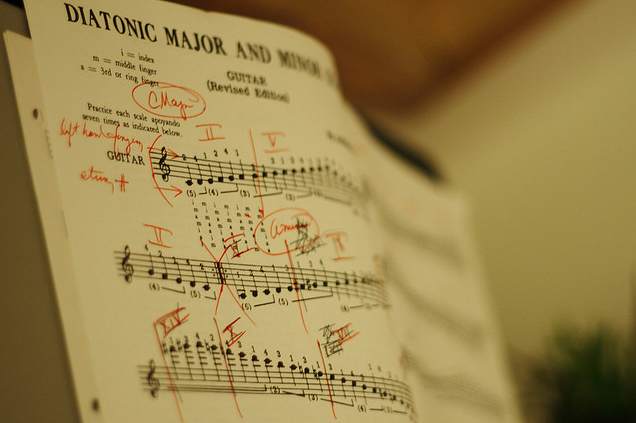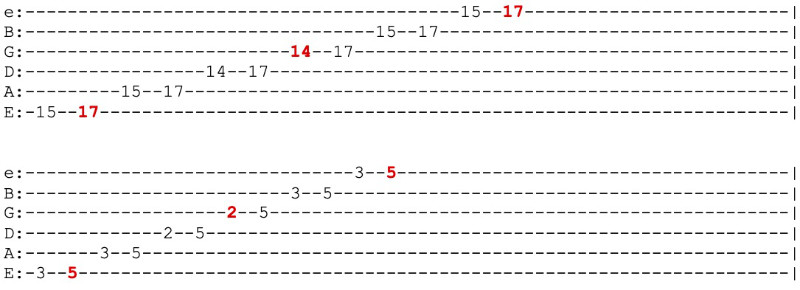When I first learned to play sequences I didn’t know what all the fuzz was about. Why was it so important to learn all these “sequences” or as some prefer to call them “melodic patterns”?
Anyhow, I did enjoy playing them because after a while I got into this flow and it sounded kinda cool.
Once I really got the hang of it I came to learn the benefits of mastering sequences
Sequences will improve your technique and ability to improvise and create melody on the spot.
Your playing becomes more flexible, creative and it’ll keep you from sounding like someone who is playing scales all the time. :-)
In other words… Want to improve your technique or want to improve your improvising skills?
Go ahead and work hard on these assignments.
Enjoy!
Assignment #1: Memorize the G Major scale and play it using alternate picking.
Assignment #2: Memorize the 6 sequences below (ascending and descending) and play them through the cycle of fourths. (in the key G, C, F, Bb, Eb, Ab, Db, Gb, B, E, A, D, G)
Assignment #3: Incorporate bits and pieces of each sequence into your improvisation.
Assignment #4: Try to make melodies from the patterns, play with the notes, experiment with timing and rhythm, turn things around, extend or shorten the duration/length of some of the notes, create pauses, etc.
These assignments will keep you busy for a while. Be patient and take your time!
G MAJOR SCALE
e:-----------------------------2-3------|
B:-------------------------3-5----------|
G:------------------2-4-5---------------|
D:-----------2-4-5----------------------|
A:-----2-3-5----------------------------|
E:-3-5----------------------------------|
G MAJOR SCALE descending
e:--3-2---------------------------------|
B:-------5-3----------------------------|
G:------------5-4-2---------------------|
D:-------------------5-4-2--------------|
A:--------------------------5-3-2-------|
E:---------------------------------5-3--|
SEQUENCE #1 ascending
e:----------------|-----------------|-------------------|
B:----------------|-----------------|-------------------|
G:----------------|-----------------|---------------2---|
D:----------------|-------2-----2-4-|---2-4-5-2-4-5-----|
A:-----2-3--2-3-5-|-2-3-5---3-5-----|-5-----------------|
E:-3-5-----5------|-----------------|-------------------|
Continue Reading








